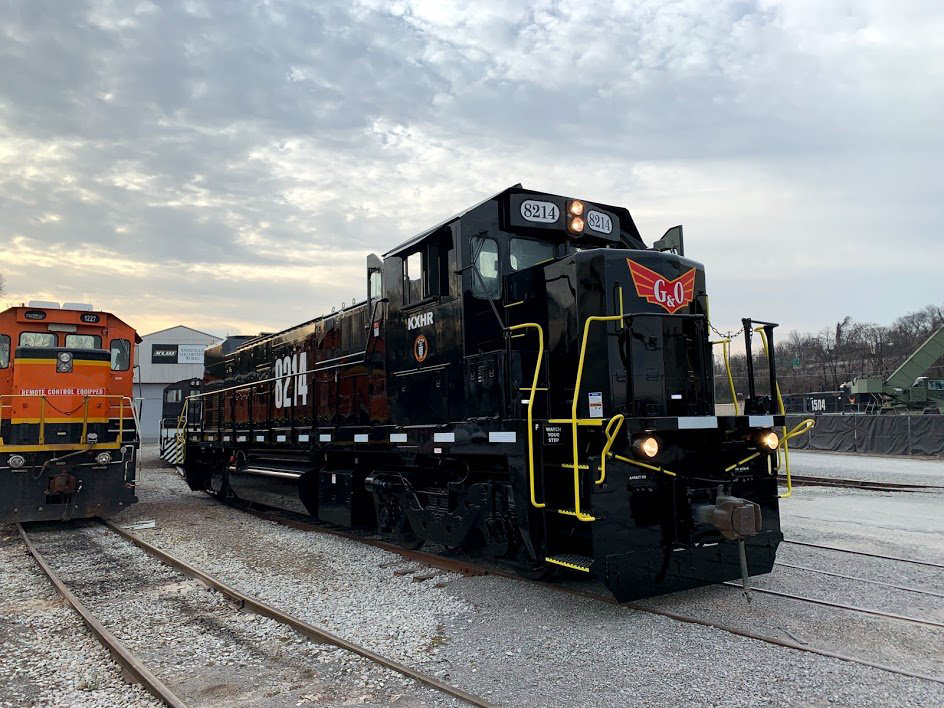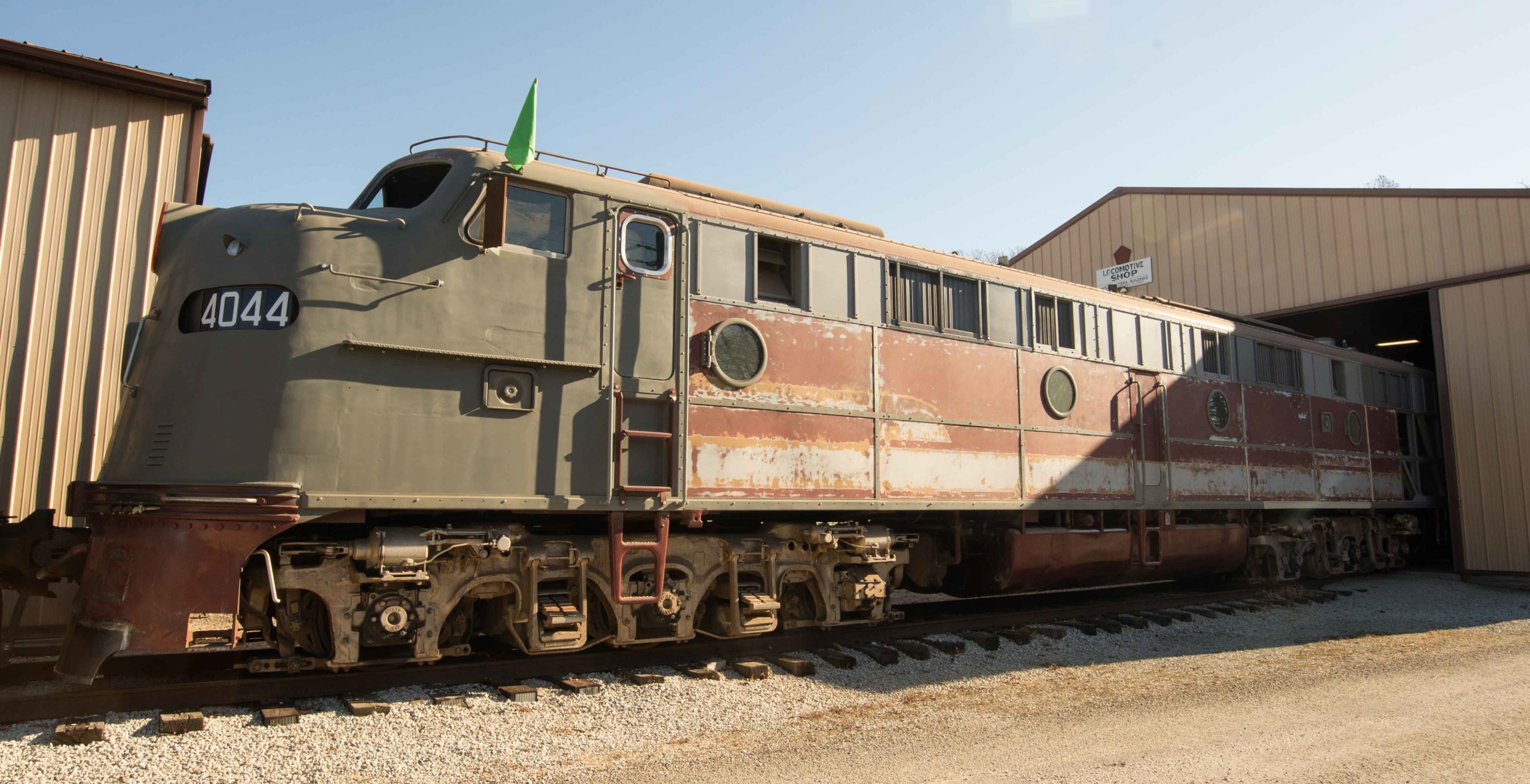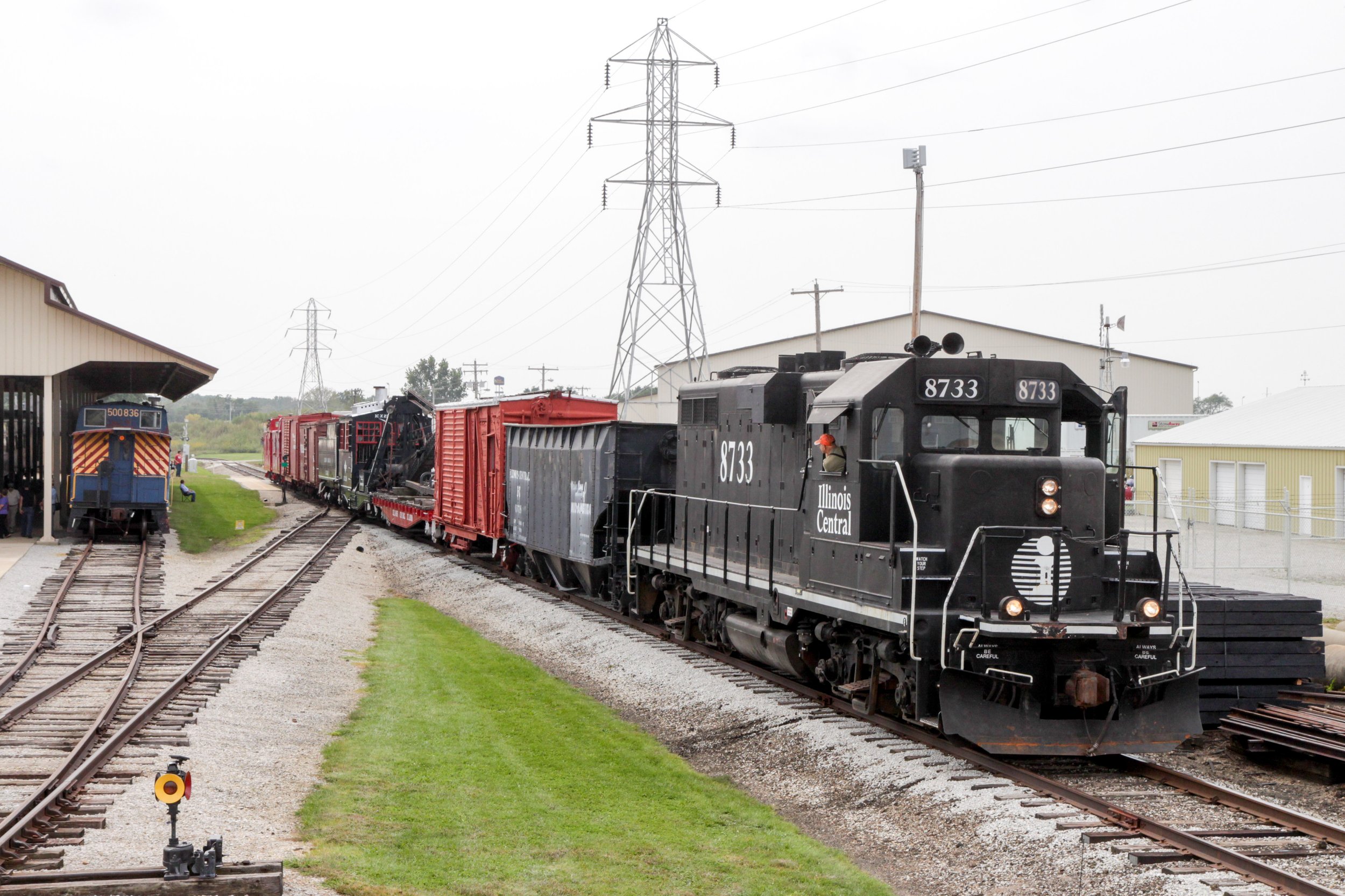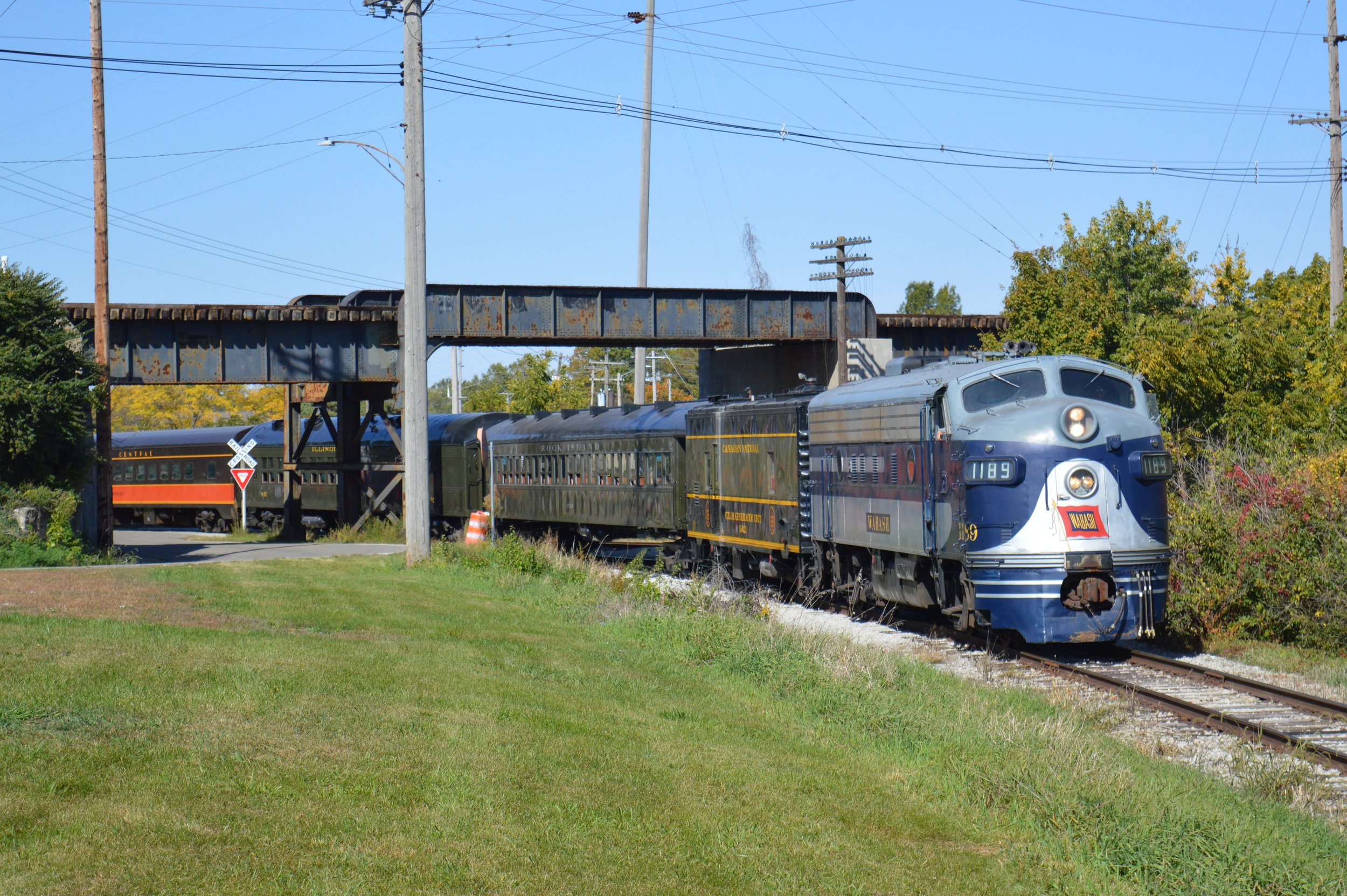After ordering the F40NGs, and their repeated delays, the Alaska-based White Pass & Yukon put up a number of their Alco/MLW DL535E diesels for sale after receiving their new National Railway Equipment E3000CC-DCs. These had been purchased by the WP&Y in 1969 to help out their inadequate fleet of 90-series General Electric shovel-nose diesels, and were ordered with Alco and construction began at Schenectady, NY on seven locomotives with 1200hp Alco 6-251D inline-6 prime movers, GE 764 traction motors, multiple-unit capabilities, and six-axle C-C wheel arrangements. The units looked like shrunken C420s and were referred to as a DL535E, but before construction was completed, Alco left the locomotive business, having been stripped of operating capitol by new owners Studebaker-Worthington. The partially-constructed locomotives were then shipped up to Montreal, to still-extant Alco subsidiary Montreal Locomotive Works, and were completed there. They then were shipped (literally) all the way up to Skagway, Alaska and delivered to the WP&Y, only for tragedy to strike when locomotives #102 and #105 met their end before ever turning a wheel in revenue service when the Skagway roundhouse burned to the ground. The five other members of the DL535 fleet were left unharmed and soon began their 53-year-long careers. Orders were placed with MLW to build three more DL535Es like those that had just been delivered, and locomotives #108, #109, and #110 were built in December 1971 and joined their older siblings in hauling ore, freight, and passengers on the 110-mile railroad between Skagway and Whitehorse.

In 1982, Cyprus Anvil Mining abruptly closed the Faro Mine and that wiped out the ore traffic over White Pass & Yukon which quickly resulted in the closure of the railroad. The railroad actually had another four DL535Es, these with wide-nose cabs like an M420W, on order, but three of them ended up being diverted to US Gypsum instead, with just the #114 being delivered to Skagway. The closure didn’t last long, however, as the cruise ship industry kicked off in Alaska and the WP&Y reopened for the growing tourism industry, but found itself with an excess of motive power and the decision was made to sell some the DL535s. The DL535Es caught the interest of Sociedad Colombiana de Transport Ferroviaro, the National Railway of Colombia, and in 1992 five of the locomotives, #101, #103, #104, #106, and #107, were sold and loaded on a barge destined for South America. Just 7 years later, passenger traffic had increased to the point that WP&Y found itself short of power, and in 1999, for a second time, a deal was struck with SCdeTF to buy back all five DL535Es, which had never been used due to being too heavy for their rails, and barge them back to Alaska. Of note, the #101 nearly didn’t survive the trip home when it broke free from its tie-downs during a storm and nearly fell overboard. A quick detour was made to Eureka, CA where it was craned back in place to complete its journey to Alaska.
The DL535Es continued to churn out another 2 decades of service, but their age, lack of horsepower, and orphaned make, resulted in the WP&Y buying new EMD-powered locomotives from NRE and selling off four of them to Durango & Silverton. Kind of neat that they went from WP&Y to former D&RGW narrow gauge, since a number of D&RGW narrow gauge K-27s and K-28s had been shipped to the WP&Y during WWII. Originally used just for Maintenance of Way work, to save on boiler tickets, they've also seen use during high fire risk and on the shorter Cascade Canyon Express.
































































